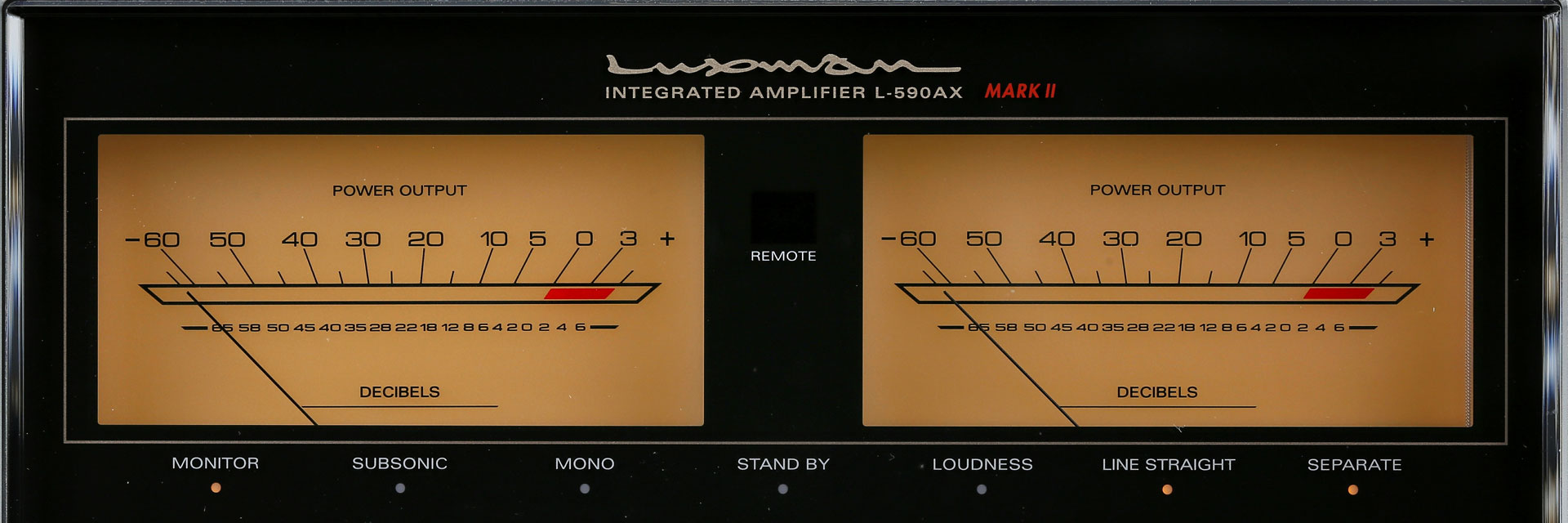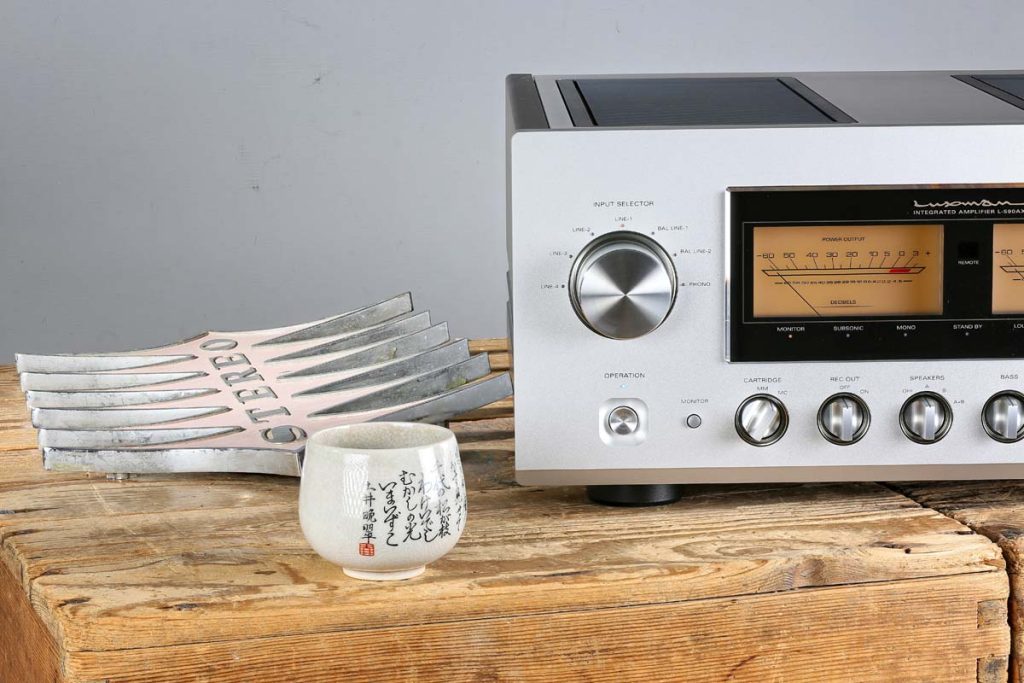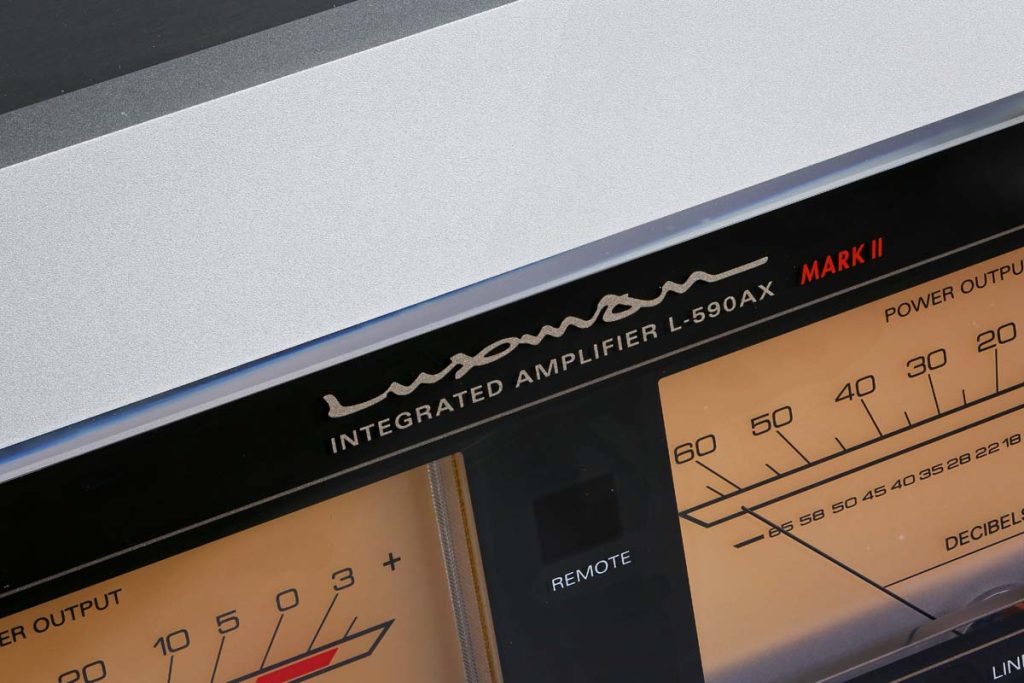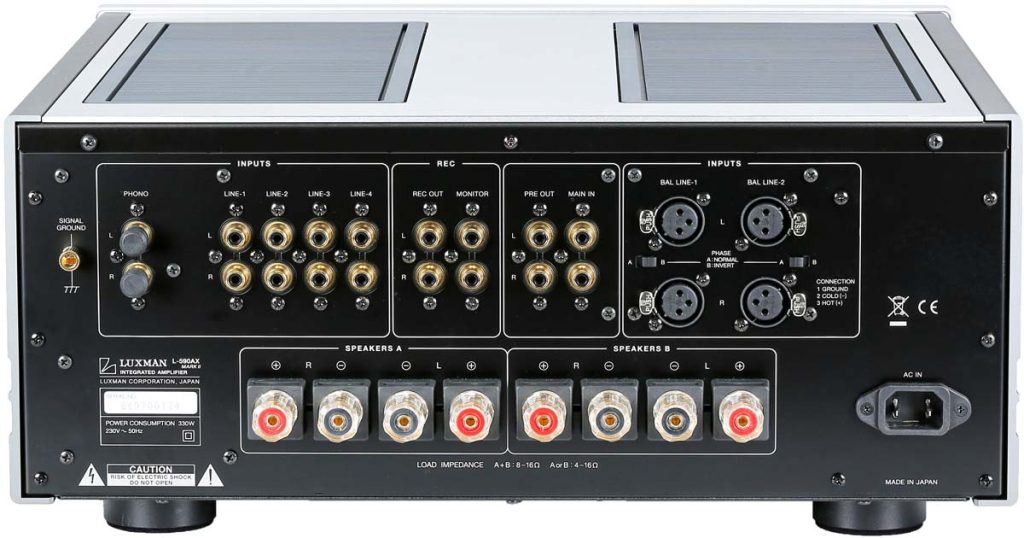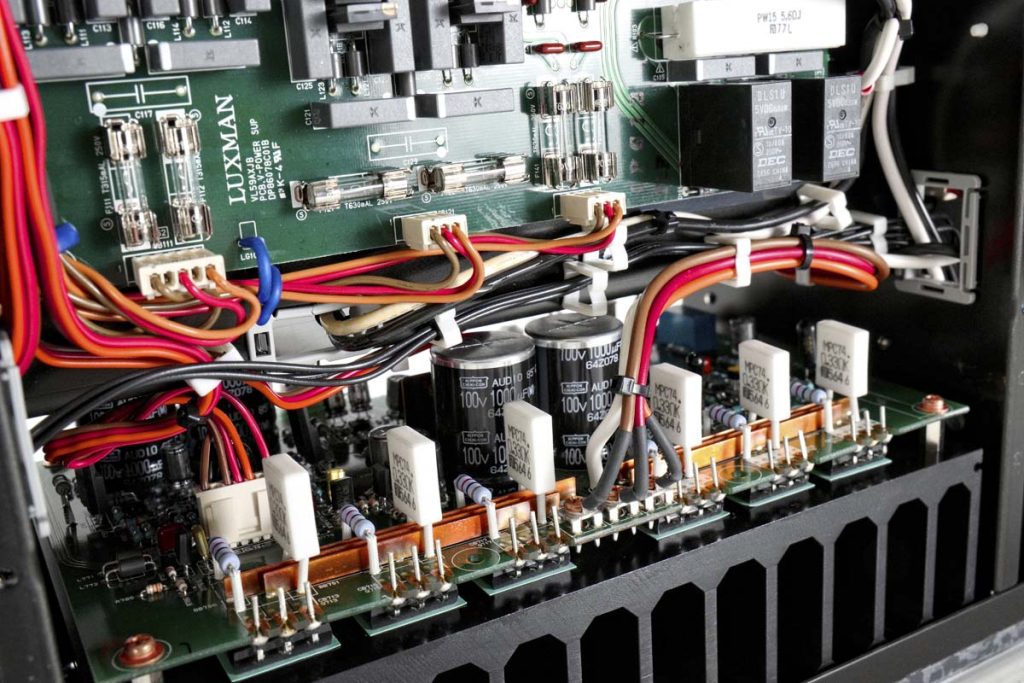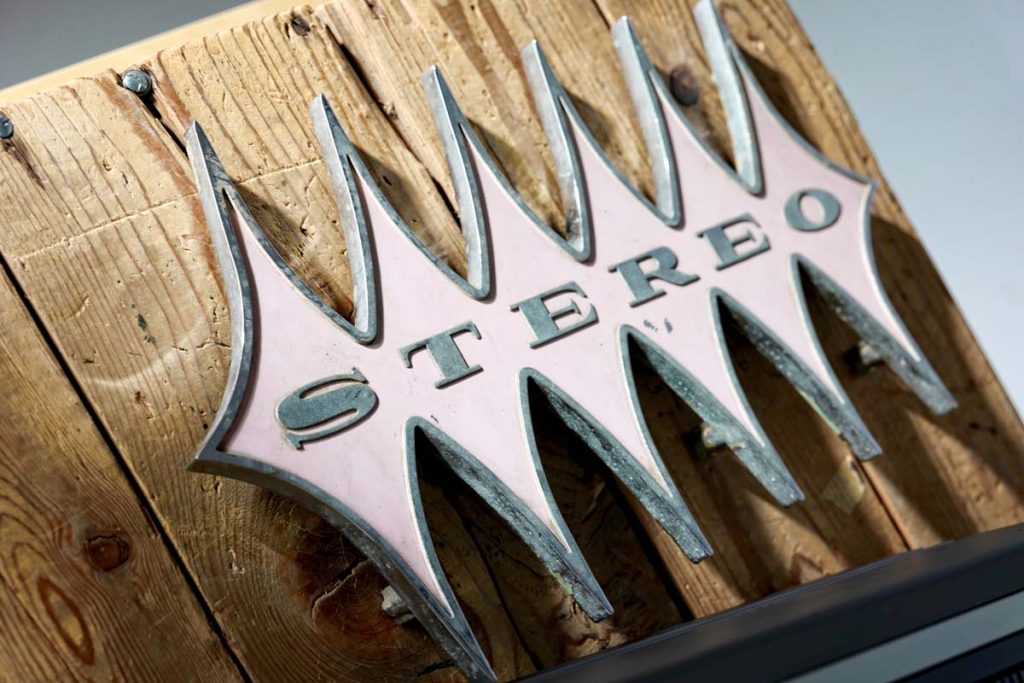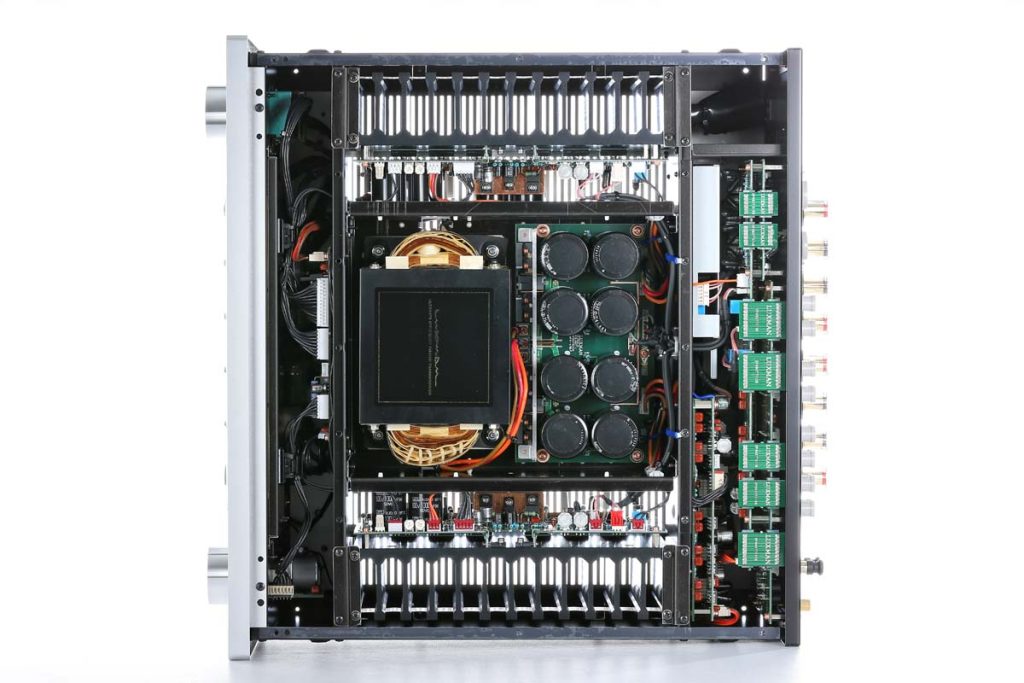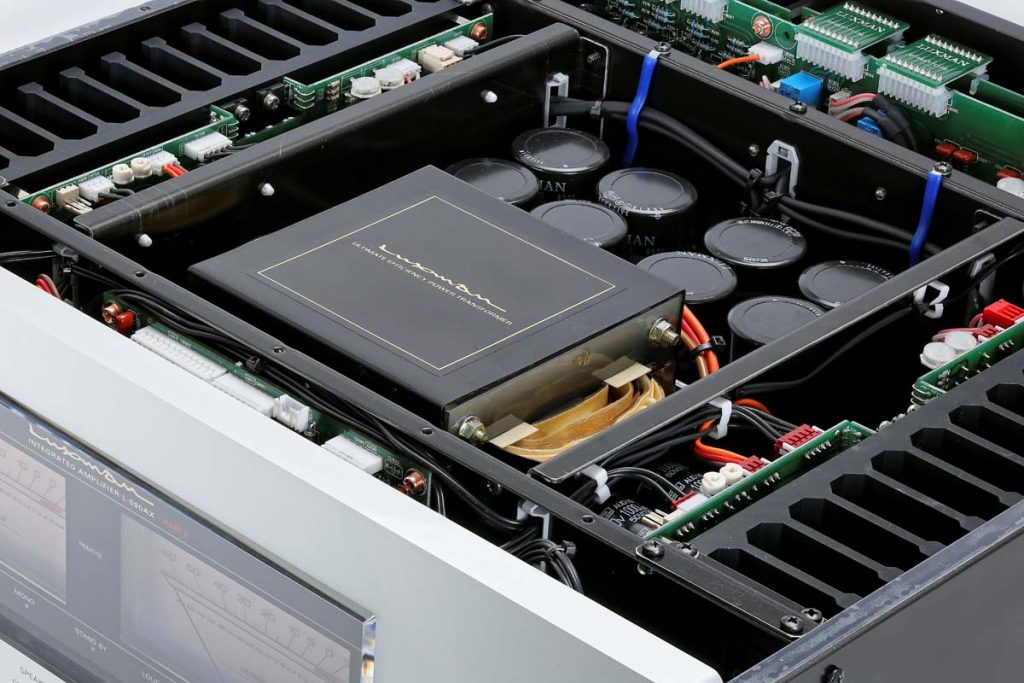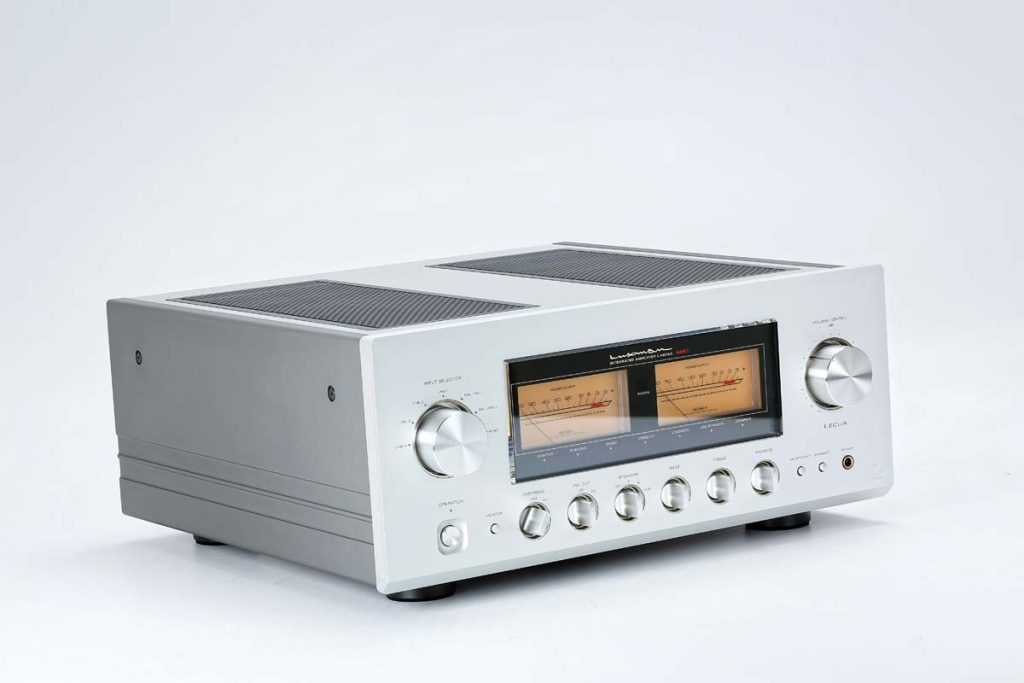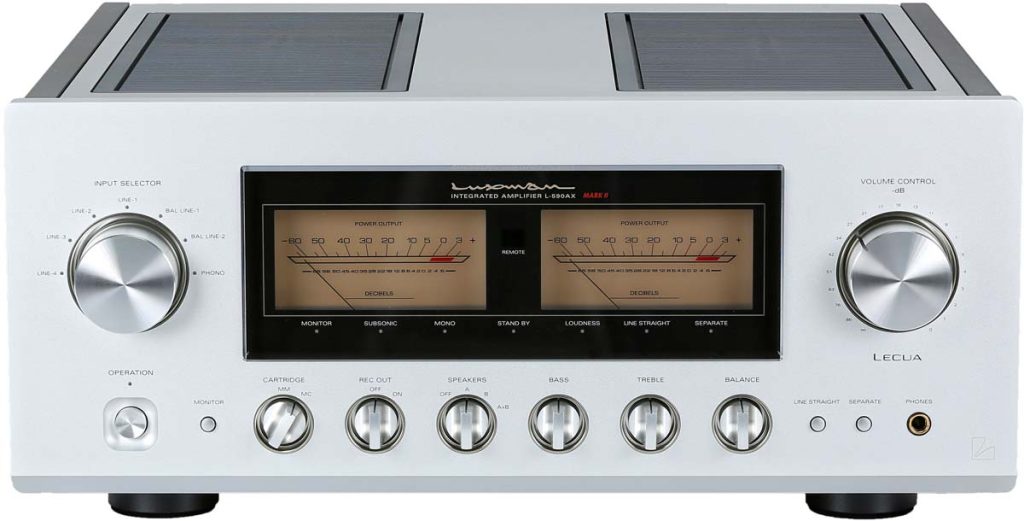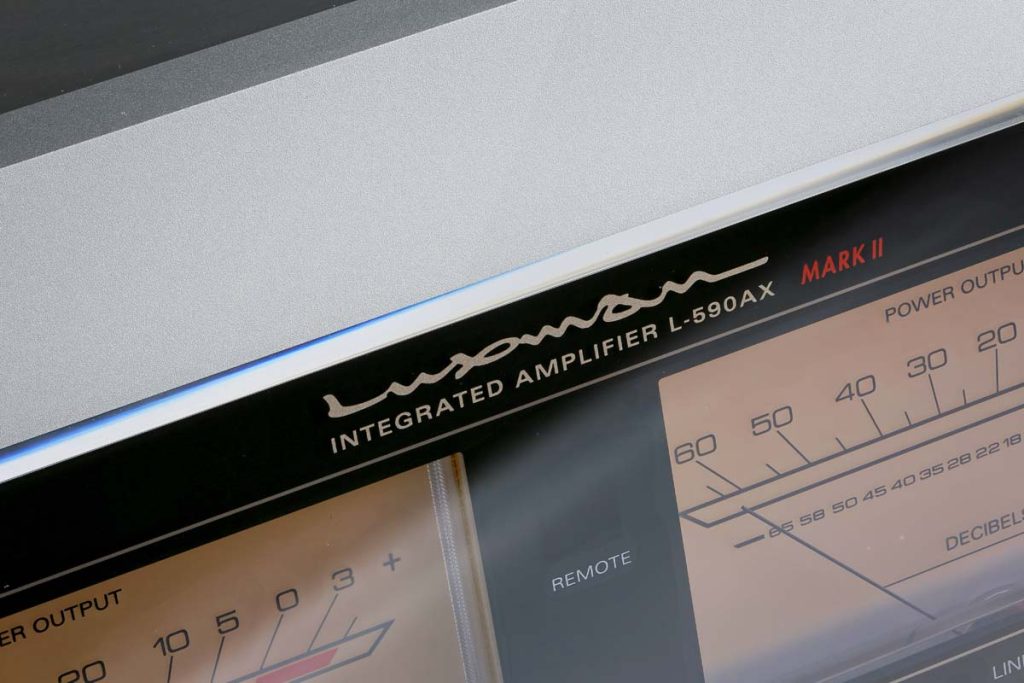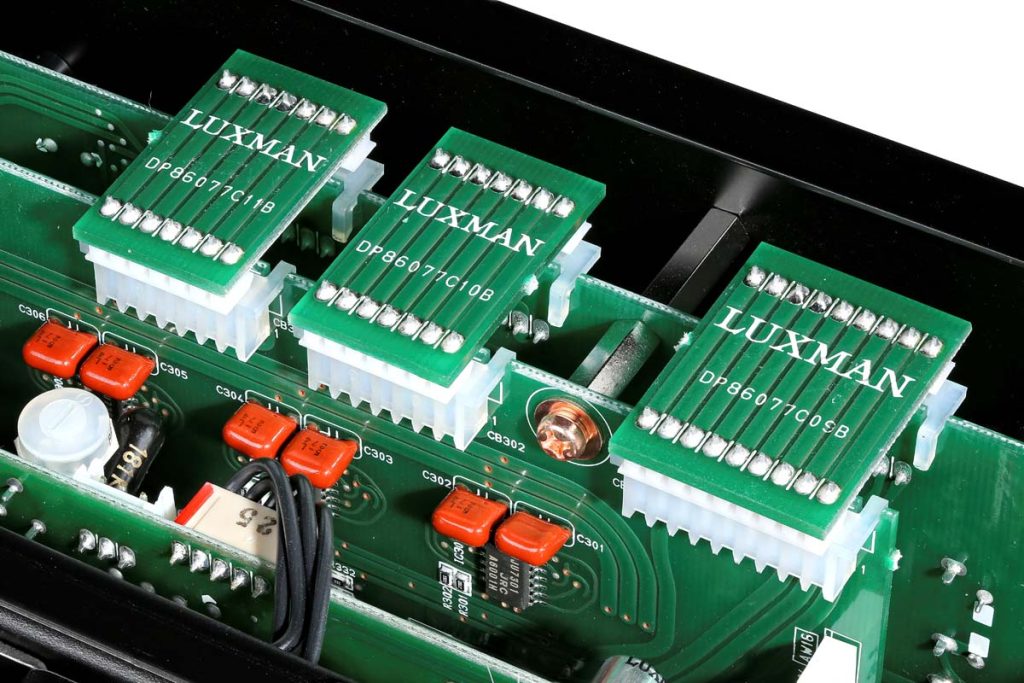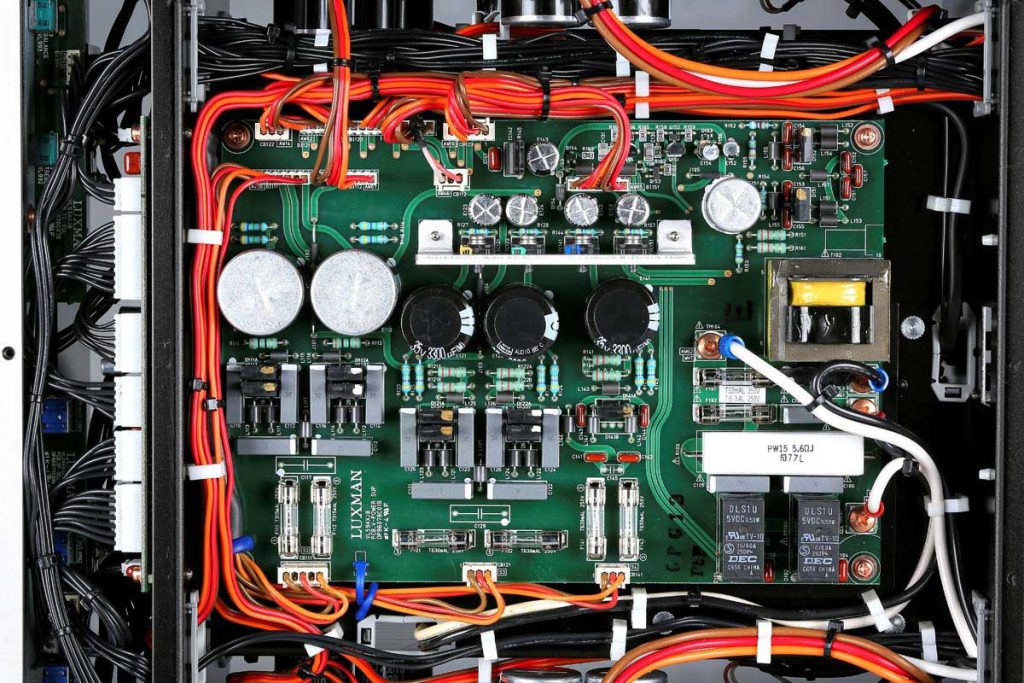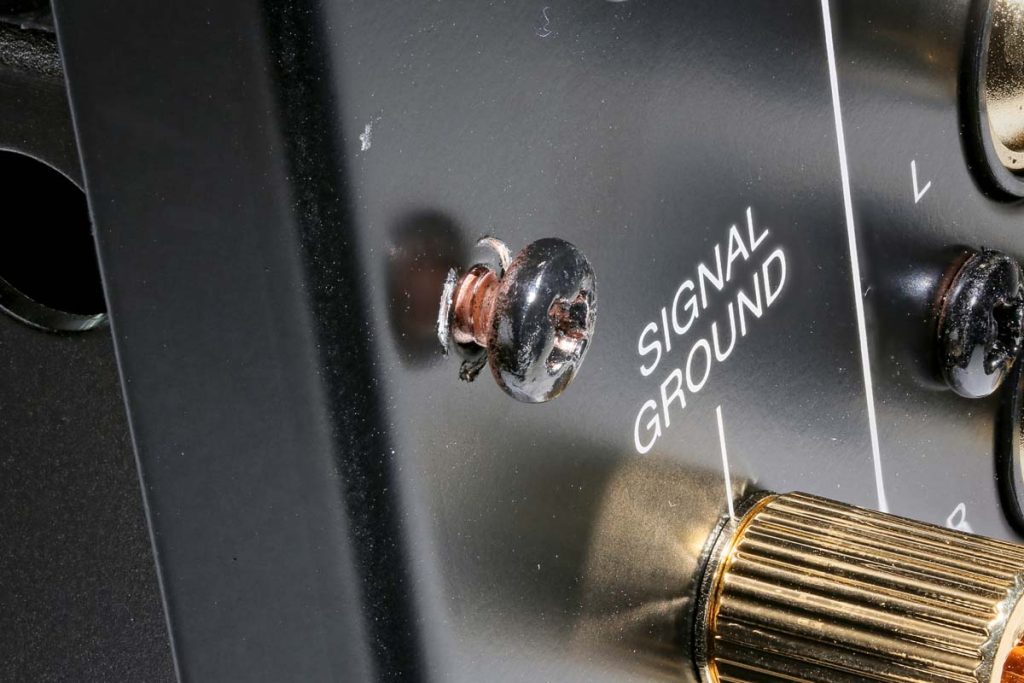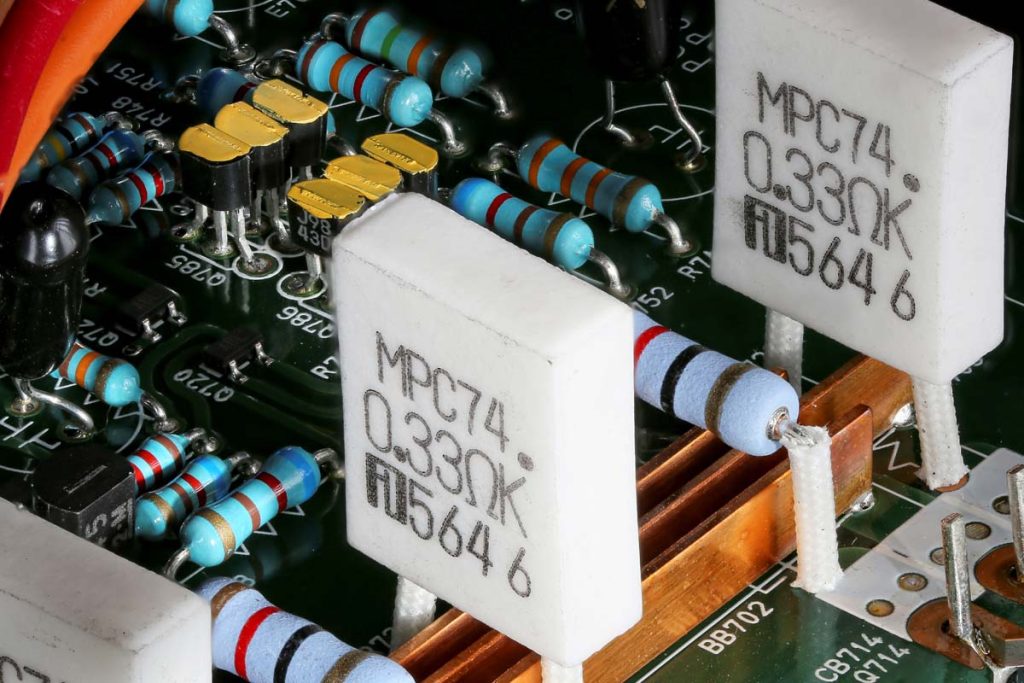Retro, but only on the Outside
Nostalgics will love its design, and audio connoisseurs will love its contemporary sound: The Luxman l-590-AXII is a worthy descendant of legendary intergrated amplifier constructions from back in the day when we still had “stereo systems” where everything had to be compatible. Well, here everything is compatible.
Are we back in 1985? Looking at the matte-silver metal fireball I have in front of me, it certainly seems that way. With its beautifully brushed front panel, the satisfying click when you turn the knobs and, in particular, the huge VU meters, I’m really reminded of the devices you used to find only at really good dealers. I don’t mean the ones in the shop window displayed with all the other mass-produced items, but rather the ones at the back of the shop, safely tucked away to avoid tempting the wrong people. There was never much of a chance anyone would have made a dash for it with a Luxman amplifier though. They were just too heavy for that — and it seems nothing has changed in that department. After I got home, I played Hercules by carrying the Luxman all by myself from the table to the rack. For days my back hurt, showing me I had clearly bitten off more than I could chew. Well, I should have known: The transistor amplifier weighs about 30 kilograms, even more than its solid appearance would have you believe.
Thirty years ago, you would hang out during a school break then later in the café next to the university auditorium and one up each other with the wattage figures of your dream amplifiers. You know, the ones you actually couldn’t afford. You would revel, so to speak, in virtual power output and enjoy trumping each other.
The current Luxman top model would have given you pretty lousy cards to best someone: The datasheet names a rather modest 30 watts at eight ohms and 60 watts at four ohms; back in the day, anything less than 150 watts per channel wouldn’t have been enough for a first-class model. But in the Luxman top model of 2016, the lion’s share of the power is achieved in Class A operation, which is always advantageous from a sound point of view. After trying and failing to really push the L-590-AXII to its limits in my sound test — my eardrums raised a white flag before I could reach that point — I assume Luxman is being rather modest when it comes to power output.
This purported time-traveler can get really loud — but that’s actually one of the less interesting facets of its disposition. The Luxman L-590-AXII embodies exactly everything that back then, 30 years ago, we were searching high and low, at home and abroad to find in a hi-fi device and would have had to pay top dollar for if we had ever actually managed to find it: sophistication and subtlety. It loves details, willingly informs me that the legendary jazz guitarist Grant Green occasionally plucks the strings of his tube-amplified electric guitar so harshly that the rosin stirs up dust (Green Street, Blue Note Records, as SACD reissue through Sieveking Sound) or that the “penny whistle” Morris Goldberg plays in the lively number “You Can Call Me Al” on Paul Simon’s legendary album Graceland is actually just a wretched little noisemaker with a light bleeping timbre.
The way the Luxman molds all these specific details into a sound that at every moment strikes a perfect balance between “crystal clear nuance of sound” and “full all-round richness” demonstrates class and style. A large measure of the charm stems from the way this integrated amplifier illuminates recording rooms, arranges ensembles in scales of breadth and depth regardless of their magnitude, and depicts instruments true to size. The Luxman L-590-AXII does not act on its own authority as a macro lens or as an acoustic magnifier, but is audibly eager to play back only what the sound engineer previously recorded — no more, and no less.
That’s always a good thing when it comes to heart wrenching moments, for example when the Philharmonia Orchestra conducted by Geoffrey Simon is joined by the brilliant solo violinist Stephanie Chase to play Maurice Ravel’s somber and dramatic Tzigane as the deeply black confessional music of a virtuoso plagued with melancholy thoughts. Or when the comforting longing for death of the ironic and metaphoric piece La Valse (The Waltz) creeps into the thoughts and the old century ceases to exist amidst massive explosions of percussion.
When the same elite orchestra tackles Gustav Holst’s late Romantic suite The Planets (Deutsche Grammophon SACD), the unpretentious conducting of the historically informed performance doyen John Eliot Gardiner ensures this cosmic panorama — intended to delve more into the world of astrology than astronomy — is played with a fascinating tightness and neatness, a structural sharpness that gets right to the point and is vibrantly elaborated with precision.
Few amplifiers I am familiar with are able to depict the immense internal tension of this exemplary interpretation, which should ideally raise the hairs on the back of your neck. The Luxman effortlessly executes the hugely difficult task without being careless or sloppy, for example by overemphasizing massive tutti sections in the piece. So, is it a sterling classical music specialist that’s too highbrow to going slumming with rock and pop music? Certainly not! The Luxman 590-AXII is a quite neutrally aligned allrounder that captures the intimacy and homogeneity of small ensembles such as the Esbjörn Svensson Trio on their album Viaticum (ACT SACD) released shortly before the untimely death of the group’s highly talented pianist, reproducing even tricky passages with no distortion.
Bach’s impressive Toccata and Fugue in D minor (BWV 565), found on the lovingly compiled soundcheck sampler of another big Japanese amplifier manufacturer, creates the almost disturbing impression that you are not inside a church but are actually sitting at the console of a huge organ. The person at the mixing desk did too good a job and recorded the king of musical instruments at every lose quarters. The L-590-AXII passes this (venial) sin on to the listener with a shrug and says: “Turn me down a bit, then it’ll work just fine.”
Anyway, listening with this amplifier at lower levels works very well because it has equipment details that, at least these days, almost seem to get frowned on in the high-end scene, for example, tone control. It also has balance control. And even — and here’s where things get truly retro — loudness control. As a reminder for anyone from my generation and an explanation for those born at a later date, this is a switch that moderately increases treble and bass at low loudness levels in order to deliver a reasonably “appropriate” auditory impression even at neighbor-friendly levels. On the other hand, just a push of a button on the easy-to-use aluminum remote control or on the sturdy front panel of the amp will abruptly sweep the whole tone control fuss out of the signal path — “line straight” is the magic incantation used by all high-enders. And because the lighting of the two large VU meters could have a negative (or at least flitting) effect on the sound, this can also be switched off using the remote control unit.
The Luxman L-590-AXII even has an outstanding-sounding phono stage for MM and MC — as such, a separate phono amplifier isn’t completely obsolete, but is an investment that can be postponed for a while. The money saved would be better spent on outstanding sources of equipment as the Luxman promptly acknowledges even the smallest improvements in the analog or digital front end by optimizing its own performance. Don’t skimp on the other side either: You won’t be making a mistake if you team this €9,000 premium amplifier with top-class loudspeakers. On the other hand, however, the amplifier also drives comparatively inexpensive loudspeakers to unexpected levels of performance. Paired with the Luxman, the B&W 683 S2 floorstanding speakers sound huge, stately, and bulky — and produce a sound completely decoupled from the loudspeakers. It’s what you would otherwise associate with good magnetostatic or electrostatic speakers.
Sharpness in the treble, a problem all of the too “analytically” aligned amplifier designs occasionally struggle with, is alien to the Luxman. No, at this point I won’t spread rumors that this amplifier sounds like tubes as that would be complete nonsense. The L-590-AXII comes across like very wellaligned transistor amplifiers from the golden age: stable in terms of the fundamental tone with precise, bone-dry bass and treble that emerge as light and airy but not anemic. In direct comparison, however, you do notice that over the decades something has happened in terms of sound’s freedom and simplicity. This is not least due to modern loudspeaker construction principles, which, even with inexpensive designs, no longer permit adventurously warped frequency responses as were common in the 70s and 80s. To cut to the chase: An integrated amplifier these days usually no longer has to painstakingly bend what was messed up somewhere else. And that’s a good thing.
If you look for the audio virtues of the Luxman L-590-AXII in less expensive categories, you’ll strike it rich: The musical heavyweight has several smaller siblings that won’t steer you wrong. This is because all modern Luxmans share one thing in common: They let you soothingly listen to music for a long time — even albums that had been confined to the “annoying” drawer. In view of the high-quality workmanship, which is akin to some bank vaults, it’s safe to assume the joy you get from listening to music with them won’t be short lived. You just have to feel sorry for future collectors: They’ll probably find it quite hard to distinguish between Luxman creations from the latter part of the 20th century and those from the early 21st century. At least visually. The progress made in terms of sound quality, however, has been huge.
Integrated amplifier
Luxman L-590-AXII
Power output (8/4 Ω): 2 x 30/60 W | Inputs: 4 x line in, phono MM/ MC, 1 x main in unsymmetrical (cinch), 2 x Line In symmetrical (XLR) | Outputs: 2 x loudspeakers (screw terminals), headphones (6.3 mm jack), record out, pre out (cinch) | Special features: tape monitor, separation preamplifier/power amplifier, and display lighting switchable, “line straight” for bypassing tone and balance controls, loudness, subsonic filter, mono | Finish: brushed aluminum | Dimensions (W/H/D): 44/19.5/47 cm | Weight: 29 kg | Warranty period: two years | Price: €8,690
Accompanying Equipment
Turntables: Audio Note TT-2, Clearaudio Innovation Compact | Tonearms: Audio Note Tonearm 2, Clearaudio Magnify | Cartridges: Audio Note IQ-3, Clearaudio Maestro V2, Grado Platinum Statement | CD players: Sugden PDT-4, T+A PDP 3000 HV, Marantz CD14 S1 + SA15, Sony ES202 | Loudspeakers: Bowers & Wilkins 683 S2, ELAC CL 82 Ltd., Falcon LS 3/5a, Live Act Audio LAS 408, Piega MLS 2 | Headphones: AudioQuest NightHawk, Beyerdynamic T1,
Sony SL-1 | Cables: Audio Note, AudioQuest, Monitor Audio, Vovox
IAD Audio GmbH
Johann-Georg-Halske-Str. 11
41352 Korschenbroich
Germany
Phone +49 2161 61783-0

